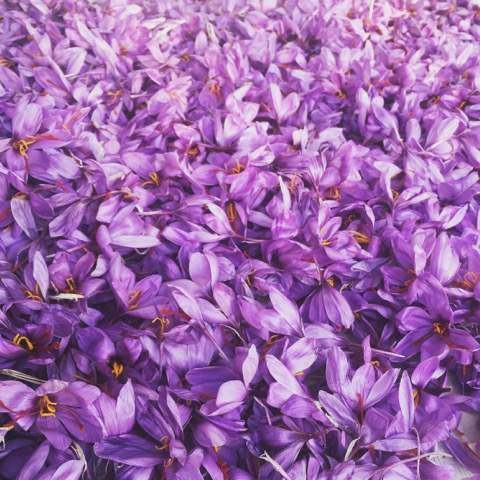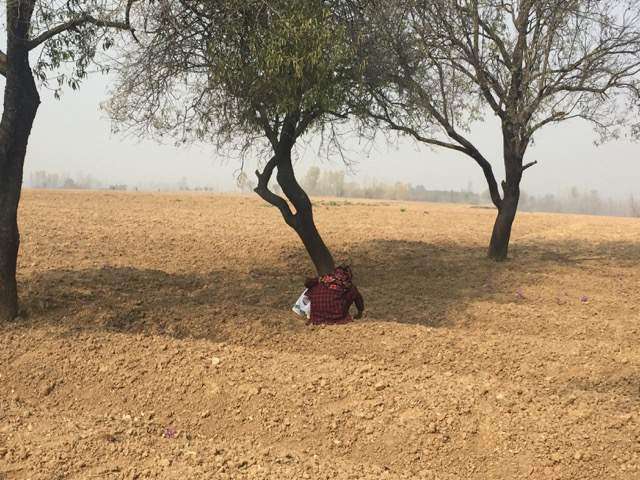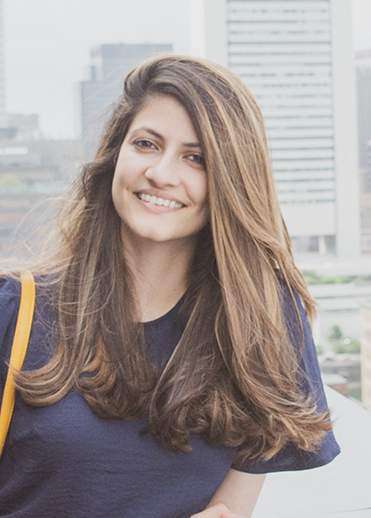How much of a difference can two people make? That’s the question Producer Carina Chavda and director Tammy Khajotia posed when they travelled to Srinagar, Kashmir to document the growing of Saffron and the impact of climate change upon this region. What they discovered was a population of the friendliest people they’d ever encountered in spite of living amongst ecological decimation and corruption in this war-torn region.
Their work on this film proves Carina and Tammy to be more than incredibly talented filmmakers; they are artists of the highest caliber who risk their own safety to tell a story of which most of the world is unaware. The medium of film has the ability to change lives and this has been proven throughout its history. Saving Saffron stands with productions like Night and Fog (1955), Roger and Me (1989), The Central Park Five (2012), and others which illuminate the plight of those whom are too often overlooked.
Daring footage is combined with a deeply moving score from Nina Humphreys (winner of a Royal Television Society UK Award – Best Music-Original Score for Sword of Honour and for the BAFTA nominated mini-series In Plain Sight) to make Saving Saffron the type of viewing that connects with an international audience; one tethered to the people of Sringar by the commonality of human experience.

On the surface, the mission seems straightforward; two filmmakers spend five days travelling across part of Kashmir with a camera, interviewing locals they meet along the way. Sadly, the fact that both filmmakers are women exacerbated safety concerns. Kashmir is one of the most unsafe places in the world especially for women. Additionally, it sits between two nuclear powers. Despite countless extrajudicial killings, ‘disappearances’, and the emergence of 250,000 orphans in Kashmir, not a single case has been prosecuted in a civilian court, nor has a single case in a military court brought a conviction.
The planning and precautions put in place by Carina as the producer were most likely more important than any footage they might obtain, quite simply because looming threats might prohibit their return from Kashmir. Discretion was paramount as media coverage is highly restricted in Srinagar. After obtaining the proper governmental paperwork and the securing of a guide and translator, the two-person crew of Saving Saffron boarded an international flight for a trip that would change their lives.
Carina relates, “Kashmiris rely on two things to survive – tourism and agriculture. The threat of war and presence of military people everywhere has driven tourists away. The threat of climate change and corruption in the government has left the region bare of any crops for farmers to make a living wage to feed their families. Yet the Kashmiri people are the warmest people I have ever met. They treat guests like god and shower you with warmth the minute you meet them.”
“They welcome you into their homes, feed you, and take care of you like you are family. It’s just in their nature. If you are ever so lucky to visit Kashmir, you will be blown away by the beauty. Unfortunately, the combination of climate change issues affecting crops and the corruption in the government along with the constant fear of war, has left the region in a bad state.”

To be unaffected by viewing Saving Saffron is unthinkable. Travelling through the area, Chavda and Khajotia encountered people filled with humility and kindness whose complete lives were in upheaval from the twin wedges of war and climate change. One farmer breaks down in tears during the middle of his interview in this documentary, moved that someone has finally come to hear his voice.
Pollution from the nearby cement factories at the foothills of the Himalayan mountains has not only destroyed most of the Saffron based agriculture but resulted in an astounding ninety-five percent of children there being born with asthma, lung disease, and other afflictions caused by living in such an environment.
This story is repeated by numerous interviewees throughout the film. Carina confirms that the pollution emanating from the factory smokestacks was momentarily halted while they were filming; a direct result of the awareness that they were capturing this on camera. Throughout the film, one gets a sense that the information making its way out of this part of the world is being closely scrutinized and controlled.

Even with bombs going off in close proximity, the creators of Saving Saffron were undeterred from pursuing their revelatory goal. Brave is the only description which suits this type of effort. It’s not comfortable to hear these stories and see the suffering of these people, but it is very important. Carina Chavda declares, “The hope is that we will generate enough interest in the global community to conduct their own independent research on what is happening in Kashmir and take action.”